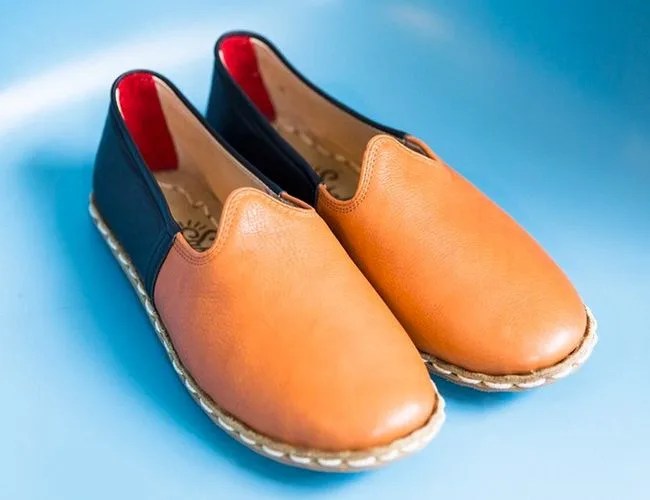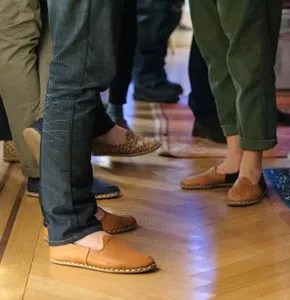Traditional handmade slippers are relics of the past. For centuries they were the everyday shoes of people throughout Turkey, India and Morocco. But these old-world shoes eventually bowed to the vogue and sheer abundance of mass-produced sneakers. However, a particular Turkish slipper is making a comeback in a new silhouette and under a new name: Sabah. These slip-on shoes are still handmade in Turkey by Turkish cobblers, who use the same materials and construction method as their ancestors of old. “You won’t find another pair of shoes like these outside of Turkey”, promises Mickey Ashmore, founder of Sabah (also known as The Sabah Dealer). “Nobody does it like this.”
In between semesters at the University of Pennsylvania, Ashmore visited Istanbul and Beirut, where he was captivated by the region’s hospitality and old-world feel. After graduating he moved to Istanbul, immersed himself in the culture, met a girl and learned to speak Turkish. “The word for language in Turkish is dil [pronounced deel]”, Ashmore says, “and that’s also the word for tongue. There’s a Turkish phrase that says: ‘when the dil touches the dil you learn the dil.’ So when the tongue touches the tongue you learn the language”, he says, smirking, “so that was probably part of it.” The girl’s grandmother lived in the southeastern region of Turkey, where they still made traditional slippers. And she gave Ashmore his first pair.
“The process of taking a needle in and out of a shoe like that”, says Ashmore, “without any aid of machinery or pre-punched holes, is about as close as it gets to magic in shoemaking.”
Two years later, both Ashmore’s relationship and gig in Istanbul had ended, but his love for Turkish shoes endured. He wore them everywhere while working at a private equity fund in New York City; he wore them in the West Village, on the subway and even with tuxedos at weddings. Soon his friends started asking where they could get a pair. He didn’t know. “So I got in touch, through my friend and her family, with the original makers of the shoes, and asked them to make me another pair; but I had a few suggestions.”
Ashmore wanted a shoe that felt more contemporary than what he was wearing. He asked for the toe to be turned down, the back shortened, the woven pattern on the front eliminated, and for a slice of rubber to be added to the shoe’s traditional water buffalo leather sole. What the shoemaker created was a slipper not too dissimilar from the current iteration. Ashmore had about a hundred pairs made, named them Sabahs, and started selling them from underneath his office desk or at parties he hosted called Sabah Sundays. At this time in 2012, Sabah was still a side project, something for him to stay connected with Turkey. But his burgeoning clientele made that change.
In 2013, Ashmore quit his job to focus on Sabah full-time. He started flying to Turkey every few weeks, meeting with the cobblers and leather suppliers and bringing back a hundred pairs of Sabahs at a time. Today, Ashmore works exclusively with these Turkish shoemakers — meaning you can’t find Sabahs anywhere else.
The Cobblers Behind Sabah


